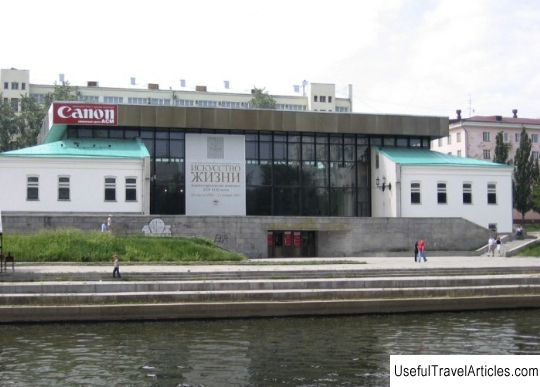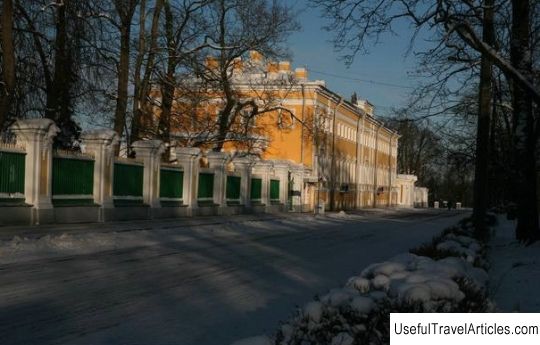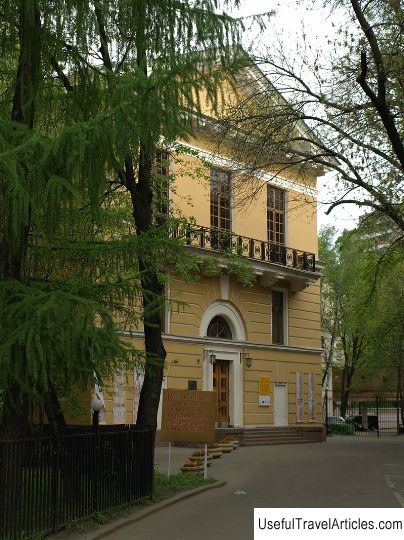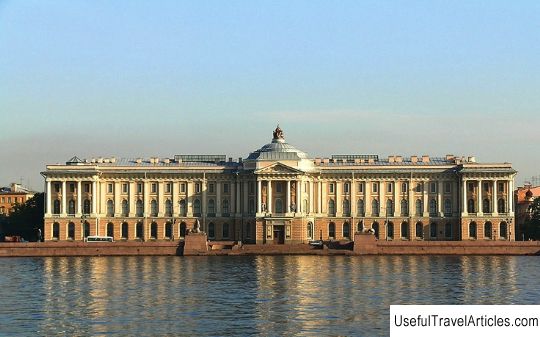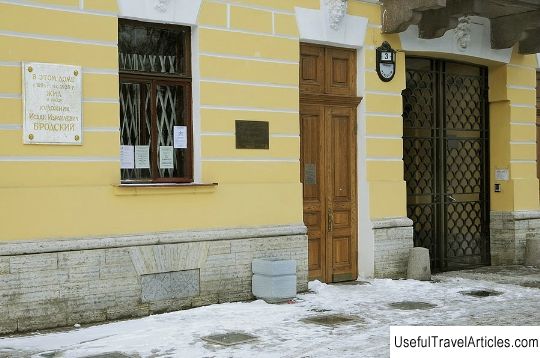Russian Museum description and photos - Russia - St. Petersburg: St. Petersburg
Rating: 8,4/10 (589 votes) 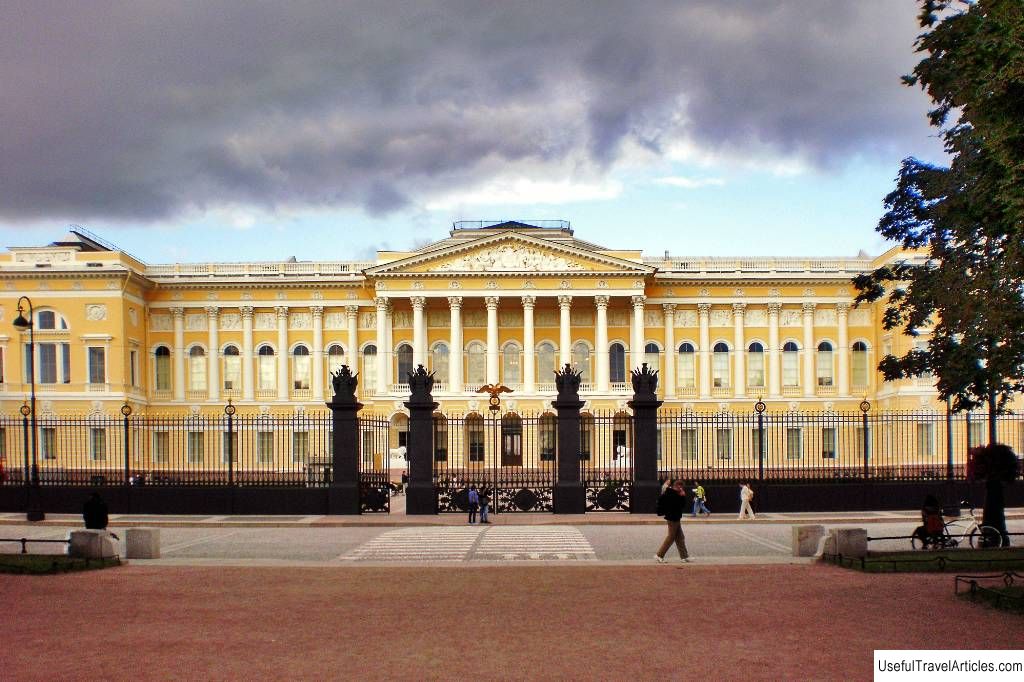
Russian Museum description and photos - Russia - St. Petersburg: St. Petersburg. Detailed information about the attraction. Description, photos and a map showing the nearest significant objects. Photo and descriptionThe State Russian Museum is one of the most famous collections of Russian art in the world. Moreover, this collection is the largest of all the existing ones (we are talking about collections of works by Russian authors). The total area of the museum, located in the center of the northern Russian capital, is truly huge. The museum consists of several buildings, which in themselves are monuments of history and architecture; there are also two gardens on the museum territory. The collection of the museum is four hundred and ten thousand nine hundred and forty-five storage units : paintings and graphics, numismatic exhibitions and sculptures, works of decorative and applied art and masterpieces of folk art, as well as a number of archival materials. The birth of the Russian MuseumThe Imperial decree on the creation of the museum was issued in the mid-90s of the XIX century . According to the regulations on the museum, the items included in its collection could no longer be transferred to any other institution, forever remaining museum property. The rules for selecting storage units were very strict. This strictness especially concerned the works of authors of the late 19th century (that is, who lived and worked during the opening of the museum). The manager of the new museum was bound to belong to the imperial family. All these rules emphasized the special, exceptionally high status of the museum. Its official opening took place actually on the border of two centuries (at the end of the 90s of the XIX century). At the same time, the museum received several hundred paintings. And the Imperial Academy of Arts transferred one hundred and twenty-two paintings; from the Hermitage received eighty paintings; Winter Palace and two suburban palaces donated ninety-five paintings. The museum also received several works from private collections; Princess Maria Tenisheva became one of the donors, who donated magnificent watercolors and drawings to the museum. This was the beginning of the famous collection of one of the most famous museums in the world. History of the collection The collection grew rapidly. Within ten years of the museum's existence, it has doubled. The works were purchased with funds from the state budget specially allocated for this purpose. The museum also accepted financial donations, which, according to the imperial decree, were spent on replenishing the collection. In the post-revolutionary period, the museum's collection began to grow even faster. It received a large number of nationalized works of art . In the 20s of the XX century, a new exhibition was opened, which included the works of the authors of that period. In the mid-20s, the museum collection already numbered three thousand six hundred and forty-eight paintings . The rapid growth of the collection did not end there: works of art in huge numbers continued to enter the museum. The need arose to expand the exhibition space, which was done in the 30s of the XX century. In the early 40s, in wartime, most of the museum collection was evacuated to Perm (then this city was called Molotov). More than seven and a half thousand exhibits, which were the most valuable part of the museum collection, were removed. The remaining works of art were carefully packed and placed in the basement of the building. None of these exhibits were damaged. The evacuated works of art were also safely returned to the museum at the end of the war. In the first post-war year, several new exhibitions were opened. Since the mid-50s of the XX century, the replenishment of the museum collection began to be carried out in accordance with a certain plan, it lost any spontaneity and chaos, becoming more purposeful. At the beginning of the XXI century, the territory of the museum expanded again: Summer Garden together with the buildings and marble statues in it (there are over ninety sculptures in the garden). What to look for What works does the famous museum collection consist of, what masterpieces are exhibited in the museum? Let's talk about some of them. In the museum you can see magnificent examples of ancient Russian art . These are icons, the oldest of which date back to the 12th century. All works in this collection were created no later than the 15th century. Among their authors are renowned, even legendary icon painters: Dionisy, Simon (Pimen) Ushakov and, of course, Andrei Rublev. But the museum collection contains not only ancient Russian images: exhibited in its halls and icons , painted at a later time, and even the works of icon painters of the early XX century. The collection of the museum includes about five thousand different icons. But, of course, the museum collection is not limited to icons. Those who are interested in Russian art of the end of the 18th century and the beginning of the 19th century will see such a magnificent exposition here, which, perhaps, no other museum in the world has. The best works of famous Russian painters of that time period adorn the walls of museum halls. If we compare the various collections of the museum, then this one is certainly the most complete and one of the most interesting. Those who are interested in the works of the second half of the 19th century , will also enjoy visiting the museum. The collection of masterpieces of this period of time is somewhat inferior in wealth to the one mentioned in the previous paragraph, but nevertheless it is also magnificent and invariably makes a great impression on visitors. It causes no less admiration among the townspeople and guests of the city a collection of Soviet art , the collection of works of the late 19th and early 20th centuries also does not leave visitors indifferent. Separately, a few words should be said about the works of new, experimental forms of art presented in the museum. In order to include them in the museum collection, in the 80s of the XX century, a special department was created that deals with contemporary trends in art. Today in museum halls you can see not only masterpieces of Russian classics, but also many installations, assemblages and other works of contemporary art. Museum territory As mentioned above, the buildings of the museum themselves are monuments of history and architecture. Let's tell you more about some of them: - One of the buildings that houses the main exposition of the museum is Mikhailovsky Palace . It was built in the mid-20s of the 19th century. The author of the building project is Karl Rossi. In the mid-90s of the XIX century, the palace was transferred to the museum. The reconstruction of the building began at about the same time. She was necessary for the palace, which became one of the exhibition areas, fully corresponded to its new purpose. The total area of the palace is over twenty four thousand square meters. At the beginning of the 20th century, a new building was added to it, named after the architect Leonty Benois (the author of the project). - Another building that houses part of the main museum exposition is Engineering Castle , also known as Mikhailovsky. It was built at the turn of the 18th and 19th centuries. For some time it was the residence of Paul I; it was there that the emperor was killed. Later, the building, somewhat altered, housed apartments, then a school was opened here that trained engineers. In the post-revolutionary period, various organizations were located in the castle. Only in the 90s of the XX century, the building was transferred to the museum. Its total area is about twenty two thousand square meters. - The Marble Palace is one of the five buildings that house the most interesting and visited part of the museum exhibition. The building was built in the second half of the 18th century. After the revolution, it was nationalized. Donated to the museum only in the 90s of the XX century. At the same time, large-scale restoration work began in the palace. The total area of the building is approximately ten and a half thousand square meters. - Another interesting museum building is Stroganov Palace . Its name comes from the surname of the barons who owned the palace. Its construction began in the first half of the 18th century. In the second half of the same century, it was rebuilt under the supervision of Bartolomeo Francesco Rastrelli. In the post-revolutionary period, the building was nationalized. For some time it was a branch of the Hermitage. In the late 80s of the XX century, the building was transferred to the Russian Museum. Its total area is about five and a half thousand square meters. - Another building that needs to be mentioned is the Summer Palace of the first Russian emperor. The building was built at the beginning of the 18th century. The author of the project is Domenico Andrea Trezzini. The total area of the palace premises is approximately six hundred and seventy-six square meters.              We also recommend reading Glossa description and photos - Greece: Skopelos Island Topic: Russian Museum description and photos - Russia - St. Petersburg: St. Petersburg. |
